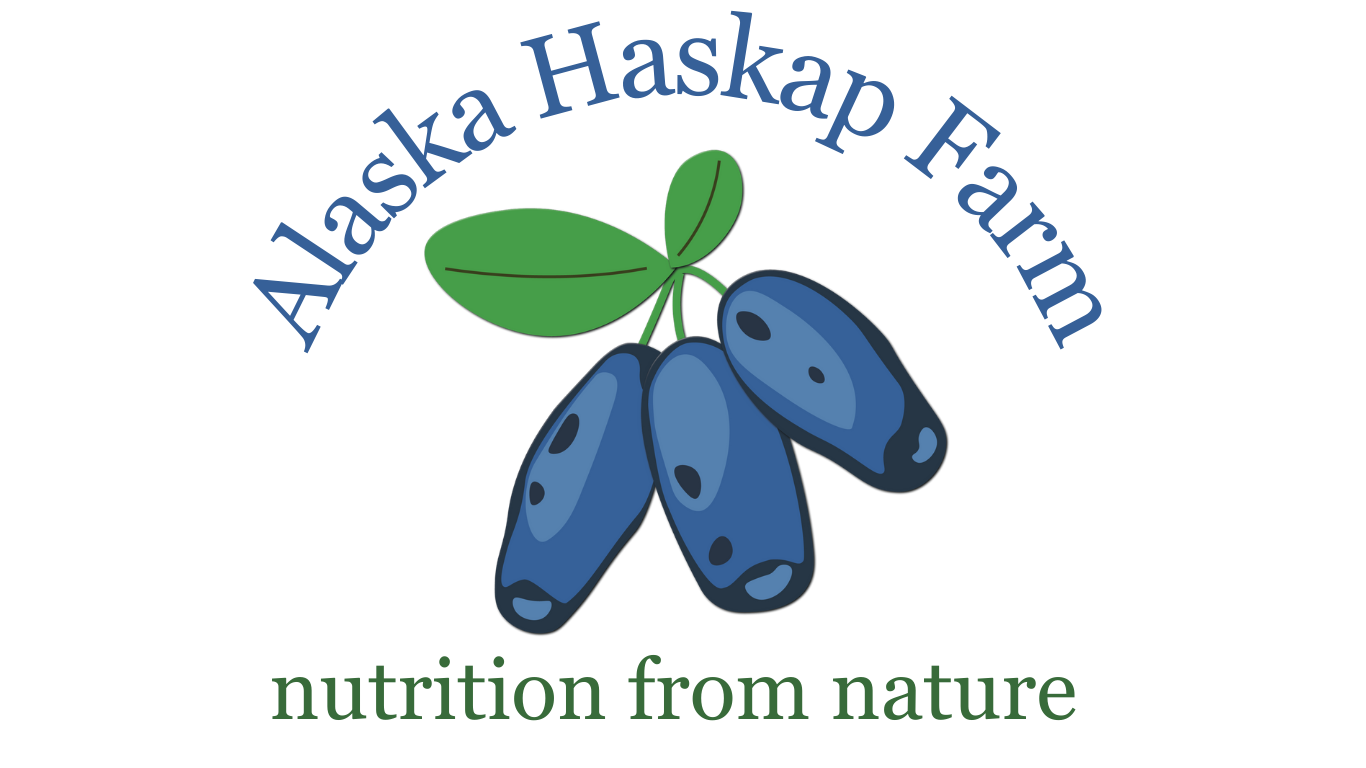
Planting and Long Term Care
Planting Haskaps
Timing is important: Haskap plants prefer to be planted in the fall, before the first freeze. September is generally good and gives the roots time to settle in before winter. Spring & summer planting should be planted with care or avoided, as this is when they are working hardest in the short season.
Spring Planting Note: Haskap plants can awaken very early and can start growing at an air temperature around 32 to 36 degrees Fahrenheit (0 to 2 degrees Celsius) when your soil is not ready for garden work. Planting during this time can disrupt the natural cycle and set the plants growth back a bit. They are hearty however, and will recover for the following year so if spring is your only option, just be careful.
Summer Planting Note: Haskap plants work hard to maximize the northern short summers. After they bloom flowers in spring, the berries come next, sometimes as early as late June/early July, similar to Strawberries. Once the fruit is out however, their job is not done. This is when they start working on next years branches. This means that the plant is still working hard and root disruption can slow the growth of next years stems. As above however, if planting in the summer time, the Haskap is hearty and will recover, you just may have less new shoots the following year.
Space is important: Each plant can grow 4-6 feet wide and at least 4-6 feet tall (some up to 10+ft tall!), space accordingly. General rule: 5 feet between plants, 8+ feet between rows.
Pollination is important: You need at least two plants for pollinating. Each species needs another/different species for pollination.
Soil: Haskaps can tolerate a pH between 5.5 to 7, ideal is @ 6.4 pH. Prepping the soil with amendments/compost before planting is ok. However, do not over water or fertilize in the fall as the plant needs to go dormant for winter, similar to native perennials. Top finished site with mulch and allow to go dormant.
Fertilizing: Fertilize in spring with organic compost and/or during summer with a foliar spray is generally all your Haskaps will need.
Note: Haskaps roots are shallow so be sure to keep area weeded until roots are well established. They overall prefer a more wild and natural environment without a lot of management.
Pruning: Haskaps do not need a lot of pruning. Some growers find it useful to prune the lower sideways branches for ease of harvesting. After 8 to 10 years of growth, a light pruning is required to remove the mature old growth or broken branches and to allow newer vigorous young stems. If you need to prune because the plant has grown too large. Please remember it is not recommended to cut the tops off new young growth, as this will reduce next year’s berry yields. Also do not be worried by peeling bark as this is normal to the Haskap plant and Honeysuckle family.
Harvest: Harvesting Haskaps is easy and rewarding. Wait until the fruit is slightly soft, tastes bright, and easily falls from the branch. If you have a Refractometer, you’ll watch for a Brix of 15-20 and harvest based on your taste. The longer on the branch, the sweeter they will become.
Shelf Life: Haskaps have a short shelf life, within a week from harvest they should be eaten or processed into something else. Cooling them off directly after harvest will help the berries hold their form/flavor. For longer storage and use, freezing them after the cooling period is a great option for long term storage and use.

